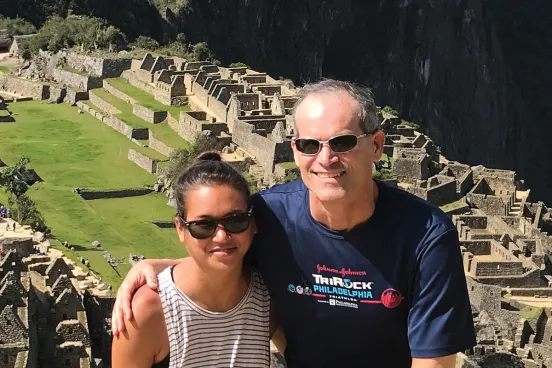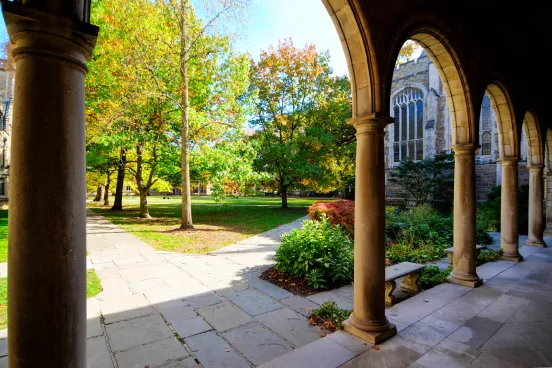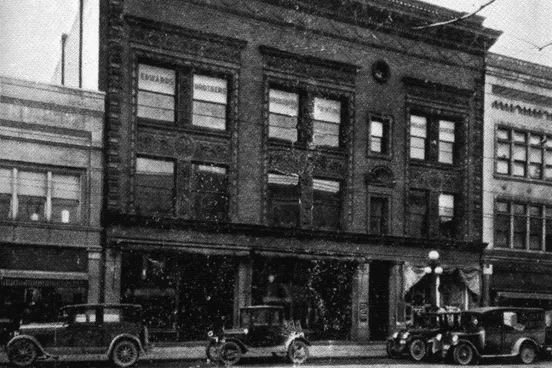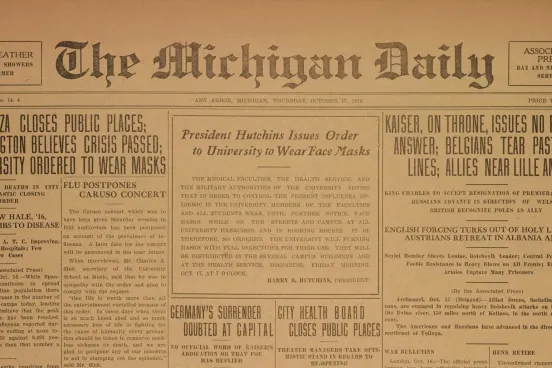One of September’s Reunion Weekends included a Q&A session with former Michigan Law deans and current and emeriti faculty. The conversation explored the faculty’s views about how the Law School has changed during their time here. Topics ranged from the strength of student credentials and the cost of legal education to their thoughts on students today.
John Nannes, ’73, a partner in the Washington, D.C., office of Skadden, Arps, Slate, Meagher & Flom LLP and the national chair of the Victors for Michigan campaign, moderated the conversation.
Faculty participants included Evan Caminker; Doug Kahn; Ted St. Antoine, ’54; and Christina Whitman, ’74.
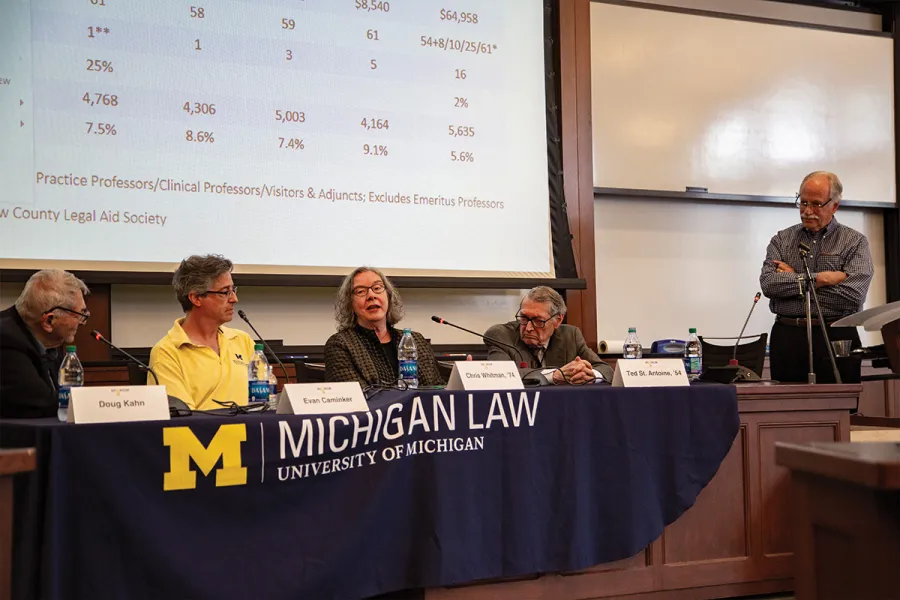
The Increase in Women Faculty and Students
Whitman: “There’s been a big change in the number of women faculty since I was a student, when there were none. For my first eight years here on the faculty, there were only two of us. That increased to four at some point, but quite a while ago, we got to the point where I couldn’t remember off the top of my head how many women there were, so that was an improvement.
“The number of women students, I think, has made a difference in women’s studies. It took a very long time before I felt that the gender dynamics in the classroom, even in my classroom, were more equal. I was thinking about the last few classes I taught, and we certainly have a lot of women and a lot of women who talk in class. You used to have to knock yourself out to get women to participate.” [The current class is 54 percent women.]
Kahn concurred about the increasing number of female students: “I think the biggest element that I saw change was the bringing of women. For me, it was not so much about how they participated, but about increasing the pool from which you were selecting by a huge number, so we got better students. I honestly never saw much difference between the women in class and the men. Maybe it was the nature of my class.”
Whitman: “I should add that I think Doug has been, over the years, one of the most supportive of women students. He was that way when I was a student, and he continues to be that way.”
Kahn: “Thank you. I always felt strongly about treating all students the same, regardless of gender. I believe that I’ve done that. I certainly tried my best.”
Student Credentials, and the Importance of Taking Time Off Between Undergrad and Law School
Kahn: “One difference—which some of my colleagues mention a lot—that was less important to me is [how much of the class] came here directly out of undergrad. A lot of people feel that [taking time off] has had a significant impact [in the classroom]. That students are more mature, they’re more serious. I’ve found that if they’ve done some work related to what I’m doing, then, of course, it fed in.”
Caminker: “My own sense is that current students are, as a general matter, more mature and a little bit more knowledgeable about how the real world works. I think that changes the cultural and social dynamic of a law school more than it changes what is actually going on inside the classroom. Some of the students are coming to law school with more of a focus on financial considerations; others always wanted to come to law school but put it off until they had some other experience they thought would make them a more well-rounded person, or because they had other interests they wanted to explore.”
The Value of Clinics, Which Expanded During Ted St. Antoine’s Deanship in the 1970s
St. Antoine: “The law that was covered in most of the clinics at the outset was legal aid, or something close to it. It provided an opportunity for students who weren’t going to practice that kind of law with at least a citizen’s view of it. I hope it increased their capacity for making good judgments about the handling of criminal courts, the smaller claims courts, and all the other courts that essentially deal with the kind of problems that you aren’t going to find when you get into a 500-person, big corporate law firm.
“The other appeal for me was to have young people confronted with real, live ethical issues in a way that, I think, comes across much more strongly when you talk particular examples that are in front of you in a clinic. For those of you who have had the clinic experience, this is great fun for a lot of students. They are doing something real, not this abstract, theoretical, conceptual stuff in the classroom. They love it, and I can understand that.”
Putting his dean’s hat back on, St. Antoine acknowledged there are trade-offs when taking a clinic: “One of the costs is that a student’s time is split between theoretical and experiential learning. Because of the one-on-one nature of a clinic, which involves a small class, they are more expensive than offering one lecture to 100 students.”
Kahn, who wrote an article about the American Bar Association (ABA) increasing experiential education requirements, noted another trade-off. “Students are less inclined to go further in a subject and get into the advanced courses, which is where we really begin to develop a lot of the skills that lawyers need.
“Now, there are some experiential courses that I think are especially valuable. That is, a course that is transactionally oriented, where a student is given a series of facts or has to find facts, is given a goal, and has to find a way to accomplish that goal. I think students should have one course that does that kind of instruction, because it’s a different experience than just saying, ‘We have this situation. Who wins, who loses?’ It’s much different to do the planning and try to anticipate the problems.”
Whitman: “I think the main reason why there are so many more clinics is the pressure from practice and from the ABA. The ABA has been much more prescriptive in the last few years about what law schools teach, and it’s not just the experiential requirement but standalone ethics requirements and other kinds of requirements.”
Aikens Commons and Jeffries Hall, Which Were Constructed During Caminker’s Deanship
Caminker: “The Law School has, I think, the most grand, beautiful set of buildings among the top-selected law schools in the country, but it had certainly reached the point where we couldn’t grow very much.
“One of the ways the expansion has been helpful is that it’s really allowed us to create space that fits the curriculum. And we now have a place where students can congregate. The Commons opens up the opportunity for conversations, which may be about the law, or about life, or about legal practice—the kinds of stuff you used to find only in the dorm rooms, which tended to be more limiting in terms of the circle of people that you would congregate with.”



